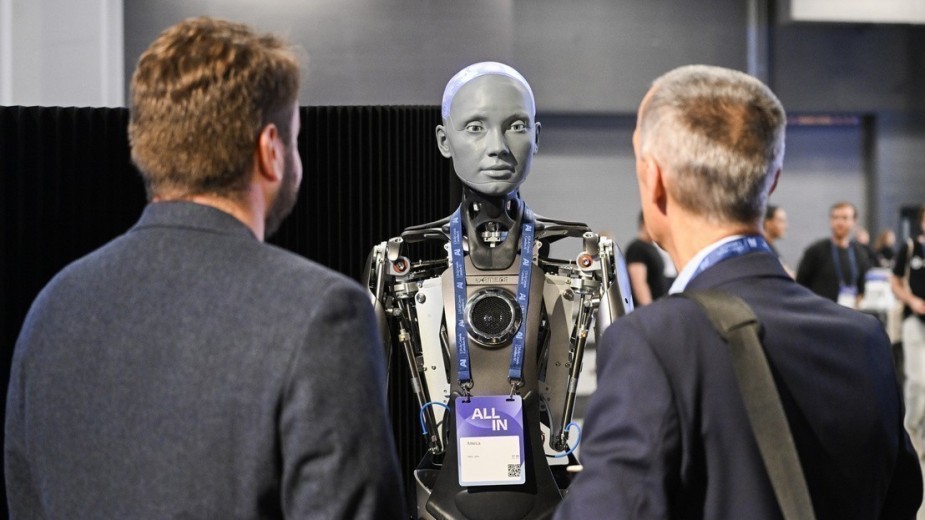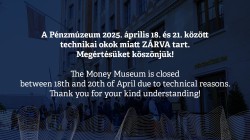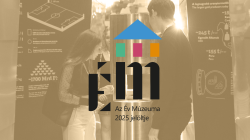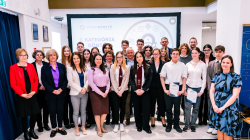
It can help us reconstruct a work of art or even complete an unfinished composition by a musician. Public collections can use AI to not only to enhance the visitor experience, but to also support the work of the professionals behind the scenes. According to the American Association of Museums, in the 21st century, AI will be an essential tool for museums managing vast amounts of data. Let's take a look at some of the museums where AI has already proven itself!
A good example of the meeting of museums and AI is the existence of Pepper, a humanoid robot, which has been installed in several museums. Pepper can also be found in the Money Museum in Budapest where it is called Mani. Thanks to AI, it can answer questions and tell stories, making culture more accessible to young visitors. The robot can also overcome language barriers, making it easier for foreign visitors to access the exhibition.
One of the first examples of museum robots was in the Musée de quai Branly in Paris, which in 2016 housed Berenson, an art-critic robot who walked around the museum in a hat, coat and scarf. The robot used a camera to record visitors' reactions to an artwork, sharing these recordings with a computer so that it could develop its own tastes.
AI: I recommend myself
This September, the Nasher Museum of Art at Duke University in North Carolina opened "Pretend you're a curator: an AI-generated exhibition", curated not by a living human, but by artificial intelligence. University faculty and students have created a program that extracts publicly available information from the museum's database. The dataset of around 14,000 objects in the Nasher Museum's collection was transformed into machine-readable data accessible through ChatGPT's platform. The project team asked ChatGPT to suggest themes for the exhibition.
AI has given the headings "utopia" and "subconscious dreams” and has proposed the title of the exhibition as "Tomorrow's Dreams". Finally, the AI was asked to draw up a list of objects for the exhibition from the institution's collection. The artefacts it selected spanned across 4,000 years, from 2000 BC to 2021. However, in many cases the objects selected were not related to the theme of the exhibition. It is educational, however, that AI favoured pieces that were created using AI.
Dalí is among us again
Thanks to artificial intelligence, visitors to the Dalí Museum in Florida can learn more about the life of Salvador Dalí from the artist himself, thanks to the Dalí Lives project. To do this, the project's creators have conducted extensive research to collect interviews, archival footage and quotes from the painter, which they have used to teach an AI algorithm the artist's facial expressions. An actor with similar physical characteristics to Dalí was asked to play the role of the painter. Finally, the AI created a version of the artist's likeness that almost perfectly reproduced the actor's face and facial expressions.
MUSEUMS CAN USE MI NOT ONLY TO ENHANCE THE VISITOR EXPERIENCE, BUT ALSO TO SUPPORT THE WORK OF THE PROFESSIONALS BEHIND THE SCENES
According to the American Association of Museums, in the 21st century, artificial intelligence will be an essential tool for museums managing vast amounts of data. Algorithms can unlock a new dimension of potential in digital image collections by organising within and across museum databases.
But it's not just data processing that professionals can help with. Artificial intelligence can augment the artifacts by taking digital copies of multiple artifacts that are similar to the original. That's why it doesn't matter which pieces of their collections museums digitize and upload to their databases, because it's from this data that AI will build its picture.
Reconstructing a severed painting
The new possibilities are illustrated by the case of Rembrandt's Night Patrol, the most visited artwork in Amsterdam's Rijskmuseum. In 1715, the sides of the painting were cut away to fit between two doors after it was moved from its original location in Amsterdam's City Hall. Robert G. Erdmann, the museum's chief scientist, has been working to reconstruct the cut-away parts. He had three sources: the surviving part of the painting, a 17th century copy by Gerrit Lundens and artificial intelligence. The museum's researcher ran into a number of problems, which he could only solve with the help of AI: the 400-year-old copy was much smaller than the original painting and was also in a different style. Erdmann created three separate programs that taught computers how to perform the tasks in order to solve the problem. The first program identified the matching details of the two paintings, and the second program superimposed the identical details. Finally, the AI, in the style of Rembrandt, copied Lundens and created the missing parts that had been cut out. The reconstructed parts of the painting were briefly on display for visitors.
What will happen to copyrights?
While these examples show how useful AI can be in the life of museums, its role is still in its infancy. In the future, a number of important issues need to be clarified, in particular with regard to copyright, which, according to current jurisprudence, concerns man-made works.
It is not yet clear how AI will open up further horizons in the life of museums, but it is clear that AI is not yet ready to take over the tasks of museum professionals. However, it is important to note that it can greatly facilitate and even speed up the work that is going on in the background. It can reveal connections between museum collections that one might not even notice.
The authors are Eszter Hergár, Director of the Hungarian Money Museum and Judit Pelőcz, museologist.
(Cover photo: Graham Hughes / Bloomberg / Getty Images)
Further news
All newsThank you for your kind understanding!
The Money Museum has been nominated for the Museum of the Year 2025 award by the Pulszky Society - Hungarian Museum Association jury.
Vote for the Money Museum and the Money Museum Panoramic Terrace!
The competition at the Money Museum is now closed and the winners have been announced.
Thank you for your kind understanding!
The Money Museum has been nominated for the Museum of the Year 2025 award by the Pulszky Society - Hungarian Museum Association jury.
Vote for the Money Museum and the Money Museum Panoramic Terrace!
The competition at the Money Museum is now closed and the winners have been announced.



